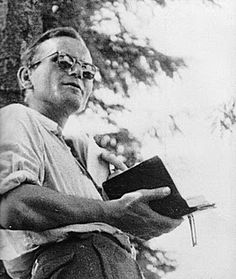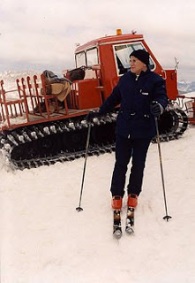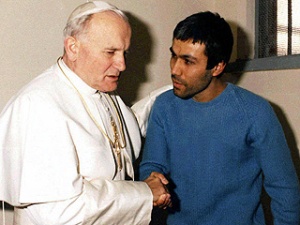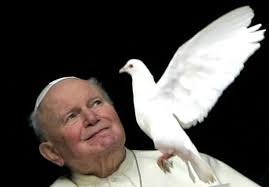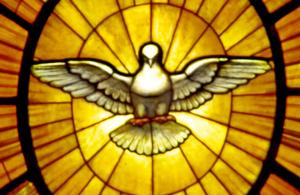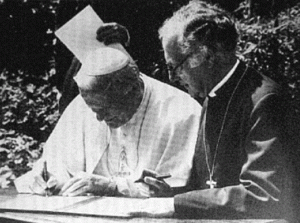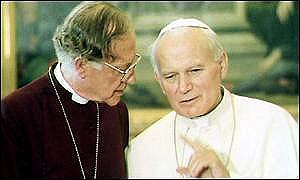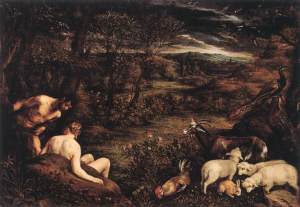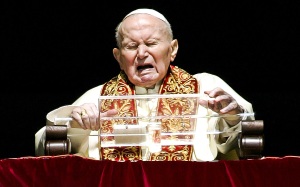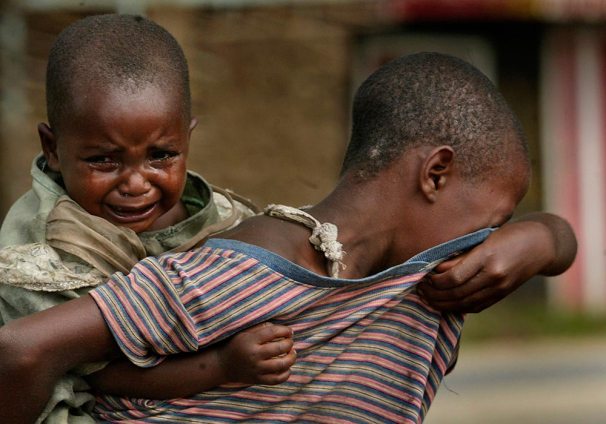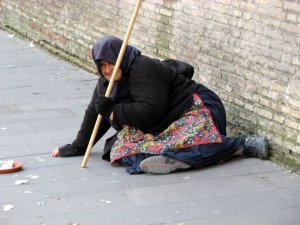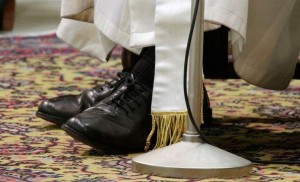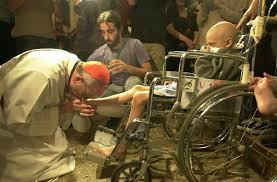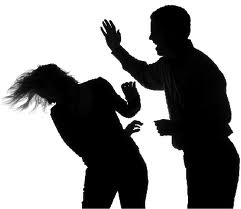After a break from blogging I can now be found at thecafeseries.wordpress.com
Let’s speak out so domestic violence is no longer a taboo topic!
Posted: January 6, 2015 in UncategorizedImagine you are getting ready for bed and your husband comes home drunk. He starts beating you until blood covers the floor. After the physical abuse he then rapes you. Traumatised by what has happened you dutifully comply when the man you committed to share your life with announces that tonight you will sleep downstairs on the hard floor – no sleeping on the couch allowed – whilst he enjoys the comfort of the mattress. As you prepare for a night of discomfort he brings the rubbish bin in from outside. He knows that where the food has lain rotting in the base of the bin there are maggots, so they are left to run on the floor. Sweet dreams are impossible tonight.
The woman who went through that ordeal told me that she was raped nearly every night by her husband in the height of her 10 years of…
View original post 866 more words
10 Things You Might Not Have Known About Pope John Paul II
Posted: April 21, 2014 in UncategorizedTags: canonisation, Catholic, Pope John Paul II, Rome, Saint, Sainthood, Vatican
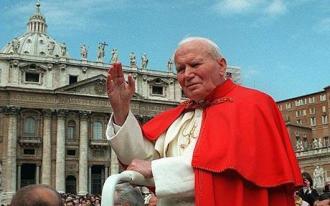 This week Pope John Paul II will be getting a lot of press coverage because the Church will be canonising him as a Saint (a great role model in the faith). Here are 10 things you might not have known about his life and work…
This week Pope John Paul II will be getting a lot of press coverage because the Church will be canonising him as a Saint (a great role model in the faith). Here are 10 things you might not have known about his life and work…
1. He was passionate about the arts. Pope John Paul II loved amateur dramatics, both performing and writing plays. He studied drama in his native Poland before training for the priesthood. One of his better known plays is The Jeweller’s Shop, a work about marriage which has been performed all over the world. When he met Bono rather than asking to sing with him, the Pope asked to try on his glasses!
2. He was an avid sportsman. As a boy he enjoyed mountain-walking, football and fishing. Before becoming Pope, he entered an International Kayaking competition. Even after taking on the role of the head of the Catholic Church he still kept up some of his sporting interests, enjoying skiiing during his breaks.
3. He was a witness to forgiveness. In 1981 he was shot, resulting in him having to endure a 6 hour operation. He asked the Church to join him in prayer for the man who shot him, calling him his ‘brother’ and announcing that he has ‘sincerely forgiven’ him. Pope John Paul II later visited the man in prison.
4. Both spiritual and physical fitness were important to him. When he first became Pope he used to jog in the Vatican gardens, but was advised that this was not a good idea because tourists could see him. He continued to jog in spite of the advice. Some referred to him as the ‘keep fit’ Pope.
5. He started the World Youth Day celebrations. These initiatives, which still continue today, have seen millions of young people encouraged in their faith as they gather in cities across the world to sing praise, to receive teaching and offer service in a community. Cliff Richard and former Christian band Delirious have performed at WYD gatherings in the past. In 2000 there were 2.1million at the gathering in Rome. He had a great sense of fun!
6. He was a peacemaker. He wrote to both George Bush Sr and Sadaam Hussein in an attempt to avert the Gulf War. Prior to that he was called upon to help bring peace to the conflict between Argentina and Chile, who contacted the Holy See for mediation help. He was the first Pope to enter a Mosque.
7. He was a friend to the new movements. In 1998 on the feast of Pentecost he spoke to representatives of various movements in the Church such as members of Focolare and Catholic charismatic renewal saying,
“The Church and the world need you. Come Holy Spirit and make ever more fruitful the charisms you have bestowed on us. Give new strength and missionary zeal to these sons and daughters of yours who have gathered here.”
“Today I would like to cry out to all of you gathered here in St Peter’s Square and to all Christians: Open yourselves docilely to the gifts of the Spirit! Accept gratefully and obediently the charisms which the Spirit never ceases to bestow on us! Do not forget that every charism is given for the common good, that is, for the benefit of the whole Church…”
8. He was ecumenical. He issued two joint statements of faith with Dr Robert Runcie, who was Archbishop of Canterbury in the 80’s.
9. A sexual revolutionary? Pope John Paul II gave 129 lectures at his Wednesday audiences on the area of sexuality which were later compiled into a work known as the Theology of the Body. This teaching in many ways was considered revolutionary as he openly discussed the difference between love and lust, sharing his thoughts on the gift of sexuality, nakedness and more! It has been taught in both Catholic and Protestant environments. He said, “The fact that theology also considers the body should not surprise anyone who is aware of the mystery and reality of the Incarnation”.
10. He served to the end. Pope John Paul II served as head of the Catholic Church for 26 years in spite of battling with Parkinsons Disease towards the end of his life, which often saw him experience great pain.
When will he be canonised?
This adventurer will be declared a Saint on Sunday 27th April 2014 at 10am Roman time (9am British Summer Time).
Whether you agree with the process of canonisation or not it is certainly an interesting/historic moment.
Where can I watch it?
1. Live in Rome at St Peter’s Square with millions of others. Large TV screens will be erected around the Vatican for people to watch it on but it will be extremely busy.
2. It will be streamed live in 3D at cinemas around the world, including in the UK. To find the nearest cinema to you go here: http://www.canonisationliveincinemas.com/
3. You can also watch it online via EWTN here: http://www.ewtn.com/live/ewtnplayer/jwplayer.asp?feed=domenglivepage
And a final photo of the young Pope shaving in the great outdoors!
(c) Maria Rodrigues
Children Burned in Fires by Pastors
Posted: September 11, 2013 in UncategorizedTags: abuse, Bible, bogus pastors, DRC, faith, Jesus, Leadership, Pentecostal
Taking a child to Church to get some prayer might sound like a nice idea, but in some countries it is not a wonderful and blessed experience.
This is not an easy topic to write about – I already have a lump in my throat as I think about the stories I am going to share – but I believe this issue is one that Churches around the world have a duty to a) wake up to and b) respond to.
Let’s begin in the Democratic Republic of Congo, a country which has been described as the “rape capital of the world”*, where there is a widely held belief that misfortune such as sickness, job loss and death can be attributed to evil spirits working through a person who is present in your life. Many inhabitants also subscribe to the belief that anyone who is different, whether that be due to a disability, an above average intellectual ability, or even because of something as simple as bed-wetting, must have some malevolent spirits at work in them. When these accusations are made against children there are often tragic consequences. UNICEF estimates that there are around 30,000 street children in the captial of DRC, 70% of whom are living there as a direct consequence of being accused of being possessed or involved in ‘sorcery’, either having fled from home or been thrown out.
A mother from the Congo with 8 children was struggling to look after her large family so sent her 11 year old son to live with his Aunt and Uncle. The move would most probably have been an emotional upheaval for the boy, but the challenges he was to face intensified dramatically beyond simply settling into a new home. Everyone in the household got sick upon his arrival, so he was accused of being a witch who had brought a curse upon the family. They swiftly took the boy to see a Pentecostal Pastor** who claimed to have discernment skills. After paying a fee to the Church leader it was announced, “yes, he is definitely a witch”, and the boy was taken into the care of the Church to be cleansed.
The young man and 3 other boys (also in the custody of the Church) were led to a wasteland where a bonfire was lit by the elders and pastor. The skin on the boy’s bottom, legs and groin were burned off as he was turned like a chicken on a spit. Along with a number of other children, he was held in captivity in the Church building for 5 months where he was barely given enough food to survive. God alone knows how his hurting, peeling skin was treated during that time.
This is not an isolated situation, but one of many reports coming out of the country. Susie Howe of The Bethany Children’s Trust, who is also part of the Stop Child Witchcraft Accusations Coalition, says that every case is different dependent upon the country in which the situation occurs. She explained to me that there are a variety of methods applied to ‘treat’ children to rid them of whatever has supposedly caused harm to those in their life: “they are starved, they may be beaten, they may be forced to take poisonous fluids, they may have acid put into their eyes… we’ve known cases where they’ve had red hot pokers put up their rectums… and the saddest thing is that it’s being done by so called pastors in the name of Jesus Christ.”
Taking a child to get some prayer in church might sound like a good idea, but in the case of accusations (a crucial word) of child witchcraft involvement the consequences are almost always negative. Money crosses the palms of those promising discernment or a solution, meaning that some bogus pastors have become self-appointed bishops or spiritual leaders. Susie clarified the situation with these false pastors: “they’ve never been to theological college… they are in it because they can make a breath-taking amount of money from this”. The sad reality though is that some pastors who are trained in Biblical Studies, Church History and Theology, who are part of respected denominations, genuinely believe that the way in which they handle these cases are advancing the Kingdom of God. She explained, “Some of the pastors do believe that they are doing the right thing by God.” This is not just a case of poorly handled deliverance ministry (that would be a blog topic in itself), it is large numbers of children being wrongly labelled as ‘witches’ and then suffering brutal abuse as a result.
When the mother of the 11 year old boy tried to contact her son she was blocked from gaining access to him by the Church. It was then she realised things were not right so sought the support and assistance of another Pastor, one who had previously been involved in this type of activity himself but consequently realised that it was not Godly behaviour. He was able to help, with the good news being that the pastor who had abused the children by burning and starving them was arrested. However, the bad news is that he left prison after just 3 months because he was able to pay his way out.
While these situations are commonly found in African nations, South America and some Asian countries, it is important to acknowledge that there have been increasing incidents of children being labelled as witches even in the UK, which tragically have ended in death. The famous Victoria Climbie case hit our shores in 2000, highlighting that those brought up in cultures believing this teaching (that children can bring a curse to a family) travels as people leave their home country and set up life somewhere new. In 2010 another British case hit headlines: the story of Kristy Bamu, a young woman killed by her sister and partner, through physical abuse as well as the removal of food and water, all due to them thinking that she was a witch. The death of Kristy served as a wake up call to the Government, and so a plan was launched in 2012 to try to deal with the rise in cases of child witch accusations in this country. Children’s Minister Tim Loughton, speaking to the BBC said, “Abuse linked to faith or belief in spirits, witchcraft or possession is a horrific crime, condemned by people of all cultures, communities and faiths – but there has been a ‘wall of silence’ around its scale and extent… There can never be a blind eye turned to violence or emotional abuse or even the smallest risk that religious beliefs will lead to young people being harmed.”
In the Bible we see that evil does exist and that sometimes prayer is required to free people from demons, but it crucial to distinguish between a) those who are truly possessed so are in need some spiritual freedom and 2) minors who are accused of something which is a falsehood and are then abused in an attempt to free them. Jesus’ message was one of loving people to freedom not subjecting them to abuse for spiritual benefits. Susie has drawn her own conclusions from the various case studies she has assessed: “These are innocent children who have done absolutely nothing… They become scapegoats for misfortune.”
Action: What can you do? If this information breaks your heart or you want to find out more then please consider responding. There is a coalition of Christian individuals and organisations called Stop Child Witchcraft Accusations. For their vision, resources and more information visit: www.stop-cwa.org They are doing some training next year for Pastors in the countries where this is commonplace, to help them discuss these issues and discern how best to respond.
May the Church lead the way in ministering love and freedom to people, providing hope for those in despair, healing for those who have been hurt, as well as bringing teaching and formation to those who are misguided. Lord, help us to be a voice for those who are too young or too weak to speak out against the abuse they are experiencing.
©Maria Rodrigues
* McCrummen, Stephanie (9 September 2007). “Prevalence of Rape in E. Congo Described as Worst in World”. Washington Post
**Not all Pentecostals agree to such methods of handling the situation, in fact the majority globally would condemn this abuse of children.
Have the beggars in your High Street been trafficked?
Posted: July 18, 2013 in UncategorizedTags: abolition, begging, compassion, faith, journalism, slavery, traffick, Trafficking
Recently I was away from home with work, but whilst the world’s media were focussed on the breaking news story taking place in that location, I was aware of a secondary story rumbling in the backdrop of the media mayhem. Many people were begging on the streets, not an uncommon sight in any city, but my suspicions were aroused that something wasn’t quite right when I noticed that those who had been asking for money during the day were nowhere to be found at night, when the Salvation Army came round handing out food to the homeless. Where had these beggars gone and where had they come from in the first place?
After 3 weeks of casual observation something rather disturbing unfolded. For every person I saw begging, invariably there was another person standing nearby watching the beggar, approaching at regular intervals to give a pep talk about how to get more money from passers by. During these brief dialogues the overseer would take the earnings achieved thus far, pocketing them, then promptly fall back to the other side of the road to continue monitoring the progress. One example of this was when I witnessed a young girl, probably in her twenties, sitting outside a Church. Across the road was a man who looked just a few years older than she was, who clearly acted as the boss. He was leaning against a lampost watching the girl’s every move. The relationship was like that of a master and their slave.
I stood for some time waiting for those inside the Church to come out so that I could interview them about the big event happening in the city, all the while watching the unpleasant begging scene unfold. The man supervising the girl became uncomfortable with me watching him – I knew this because we made eye contact and a few moments later he walked round the block before returning to lean on the wall near his ‘worker’. Perhaps he thought I was a journalist investigating his activity because I was standing with a recording device? Every time someone walked past the girl she changed from a more relaxed pose to putting on a strained, desperate face, shaking a cup of coins, glancing over her shoulder as she did so to check that her ‘supervisor’ was noticing the effort she was making. She looked young, afraid and controlled. I felt helpless as I watched, so used the time standing there to pray for her. Once the congregation emerged from the Church I approached the entrance to interview some of the worshippers, giving the girl a smile which she returned with a beautiful beam. She had noticed earlier that I had been watching the man – our exchange of smiles felt like shared solidarity that I knew she didn’t want to be there.
On another occassion during my trip I saw an old woman begging, and a man who was of an age that he could have been her son was the one in charge this time, almost bullying the elderly lady into looking more bedraggled. He was rough with her, paying her no respect when up close, and looking at her with disgust when watching from his look-out post. She was on the floor in the dust holding out a broken polystyrene cup, with a wooden walking stick laying on the ground beside her. As with the girl outside the Church it was a horrible thing to witness a woman being controlled in this way.
Over the weeks I began to notice that I never saw adult men begging unless they had some sort of deformity – whether those injuries were inflicted by those in their care to aid the begging or is something they were born with I will perhaps never know. One man had no hands, it looked like they had been chopped off – if I had a copy of Nick Vuijicic’s biography (the man born with no limbs) in the native language of the dust-covered gentleman then I would have given it to him, to show that physical limitations don’t mean you have to be on the streets. I do acknowledge though that if the man is living under the control of a carefully crafted begging operation his freedom to get out of street-working may be limited. Another man I saw begging had one foot which looked as if it had been broken and never put in a plaster cast to heal. The women sometimes had laminated photos of children, but my limited knowledge of the country’s language meant that I couldn’t ask where they got the laminator from or where their young were being kept whilst they begged. Some older children were also part of the act: one boy I saw was playing the accordian and being forced to sing to get funds, something I would label as child exploitation. Bernie Gravett, former Met Police Superintendant, told the BBC when speaking about children being made to beg in London: “This is modern day slavery. How does a four-year-old child consent to be exploited?”
We never know what someone has been through so cannot judge their situation – Mother Teresa said that if we judge we don’t have time to love – but I feel there is a need for us to open our eyes to those around us, to look out for the vulnerable who might be longing for support and help. Some of those I saw with broken cups asking for money may have been trafficked, either stolen, sold into slavery or forced into it. Perhaps they all slept in a base somewhere at night, coming out to work during the day, I don’t know, but what I do know is that I want Jesus’ heart of compassion so that rather than using my energy to speculate about what is really going on I use my energy to intercede and then act with wisdom.
I feel sorry for these beggars, they do not appear to have freedom to be who God created them to be. May we be God’s eyes, ears, hands and feet, to make a difference.
Prayer: Lord, give us your heart of compassion for those we encounter in our daily lives. Please give us wisdom about how to respond to shocking scenes we witness, directing us as to how to do our bit to help and support those who are in need. Come, Holy Spirit.
Action: There are many great anti-trafficking charities run by Christians in the UK (e.g. Stop the Traffick, A21 etc), but should you want to contact The UK Human Trafficking Centre with any concerns their phone number is: 0844 7782406
© Maria Rodrigues-Toth
Vicars who beat up their wives!
Posted: April 23, 2013 in Abuse, Bible, ChristianTags: abuse, Affairs, Christian, church, Clergy, Divorce, God, Marriage, Pastoral Issues
1. Elizabeth’s Story:
Elizabeth was a vicar’s wife, but after repeatedly being beaten by her husband and then discovering that he had had an affair, the relationship ended in divorce.
When she got married she thought everything would go smoothly. Elizabeth says, “I promised God forever that I was going to look after my lovely husband, be a vicar’s wife and care for the parish”. However, this dream of the perfect Christian life soon began to fade. Looking back Elizabeth notices that her husband began to need the approval of younger woman. One day he just disappeared. She didn’t know the whereabouts of her spouse for 3 months, and then it turned out that he had found another woman. Upon his return Elizabeth and her two children were left homeless.
Fortunately she had parents who were able to take her in, but had she not had somewhere to move to immediately the already challenging and emotional situation would have been far worse. She claims that the Bishop didn’t know how to handle the situation; after all it was awkward having the model family fall apart in this way. Prior to her husband’s vanishing act things had been unsettled: “My husband had been extremely violent; sometimes I would be quite badly bruised, so I had to be covered up”. It was her faith in God which helped her in scary moments: “I remember when he used to beat me I used to see how many times I could say the Lord’s Prayer until he finished… God gives you such strength and support in difficult times”.
She feels there is a great pressure on clergy marriages: “You are being looked at because you are in the public eye, so when things don’t work out it is hard for people to know how to respond”. She thinks sometimes Church congregations don’t know what to say when the leader’s marriage ends because they think “the vicar never does anything wrong”! Elizabeth’s is not an isolated incident.
———————————————
2. Alex’s Story:
Things had become difficult in the parish in which Alex and her dog-collared husband lived, so he began to take his frustration with the ministry out on her. She claims to have been a victim of not only physical violence but also emotional and psychological abuse. One day, she says, “he assaulted me very badly and was arrested and was eventually sent to prison”. She admits that she got married young so was perhaps a bit naive, but told me that she “assumed that everything would be absolutely fine and we’d just live happily ever after”.
Divorce can be an isolating experience, but when you are seen as the pillars of the church the situation can be particularly awkward, especially if the congregation start to take sides. Alex says, “most people would avoid talking about it”. She says she did know a few other people who had broken marriages, but remembered seeing a support organisation for clergy wives advertised in the Church Times, however the name escaped her. A quick internet search enabled Alex track down Broken Rites: “It was the single most helpful thing when my marriage broke up. It was nice to know that there were other people who had been through similar experiences. You don’t have to explain from scratch what it is like – losing your place in the church and potentially in the community – there is a common understanding even though members of Broken Rites marriages break up for different reasons.”
————————————-
3. Sue’s Story:
Not every clergy marriage which ends in divorce is due to an affair or abuse. Sue and her husband just found that things were not working: “My marriage broke up in 1997. I had 2 children. I got very little spiritual support to help maintain my faith”. Sue was put in touch with another clergy wife who had been through a similar situation via the organisation Broken Rites. She says, “You think you’re the only person whose marriage has broken down being married to a clergyman… there are others who have been through it and managed to rebuild their lives”. Just knowing that there were others in a similar situation provided her with great encouragement.
Support:
When a woman gets married she hopes it will last forever, especially if her husband is a clergyman. Sadly many marriages fall apart in the vicarage, so how can you handle a break up which takes place in a public arena? This weekend was the 30th Anniversary of Broken Rites, a group established in 1983 (officially formed in 1985) to support vicar’s wives who require practical, emotional and spiritual support during the transition from vicar’s wife to an ordinary parishonner. Obviously since it was set up there has been a shift in situation in that women can now be ordained in the Anglican Church, so if you or someone you know is married to a clergyperson (male/female) and the relationship is heading down the route of divorce, for whatever reason, then do head to www.brokenrites.org for information on the support you can receive, without judgement. The organisation seeks to serve those from any Christian denomination.
“Everybody’s story is different and unique but there are common threads. Obviously a clergy marriage has added stresses… sometimes that tips the balance and I think the clergy struggle for where to go if there is a problem in the marriage because that is seen as failure.” – A woman divorced from a clergyman who has been supported by Broken Rites.
(c) Maria Rodrigues-Toth
20 things you might not know about the new Pope!
Posted: March 28, 2013 in UncategorizedTags: Cardinal, Catholic, Christian, Conclave, ecumenism, faith, Francis of Assisi, Gospel, Italy, Luis Palau, Pentecostals, Poor, Pope Francis, Rome, Vatican
When writing a blog aimed at Christians from all Church traditions, it is probably not advisable not to write an entire post on the Pope, but hopefully you will agree that I made the right decision in doing so!
Here are 20 things you might not have picked up on which either Pope Francis has done during his pontificate or got up to before he came to Rome:
1. Today he has broken years of tradition by choosing not to hold the Maundy Thursday foot-washing in one of the main Churches in Rome, such as St Peter’s Basilica. Instead he is heading to a young offenders institute in Rome to wash and kiss the feet of 12 of them.
2. When leaving Argentina to cast his vote on who the new Pope would be, a couple of his friends clubbed together to buy him some new shoes because the ones he was planning to wear were shabby and worn. (Those same new black shoes are apparently the ones we’ve seen him wearing as Pope!)
3. Once declared the new Pope (something he was not expecting due to his age) it was customary for the Cardinals to greet him one by one. He decided not to sit on the throne prepared for the welcome, instead choosing to stand up and greet his ‘brothers’.
4. As the Pope and Cardinals were leaving for St Peter’s (where the new Pope was to appear on the balcony), a special Papal car had been prepared for Francis, however he opted to travel by bus with the other Cardinals.
5. Having left his life in Argentina there are few things he had to sort out. Rather than ask a PA or secretary to call up his newsagent back in Buenos Aires to cancel his daily paper delivery, he decided to do it himself! It took a while to convince the boy on the other end that it really was the Pope on the phone, calling from Rome, wanting to thank them for their service all these years. (It has been reported by the newsagents that the paper delivered to the Cardinal was always bound by a rubber band, and at the end of each month he would return all the elastic bands! A thrifty Cardinal.)
6. He liked to dance the tango when he was a young man.
7. When Pope Francis was a Cardinal he turned down the bishop’s palace, choosing more modest accomodation, which included cooking for himself.
8. In his first week in office Pope Francis had Mass with the Vatican gardeners and cleaning staff.
9. Once he became Pope he decided to return to the guesthouse he had been staying in prior to the voting process to collect his belongings himself… and also to settle the bill and thank the staff!
10. His financial advisor in Argentina was an evangelical Christian, with those who know the Pope saying that he reportedly chose him because he knew he could trust another Christian. Apparently they spent hours reading the Bible together.
11. He has washed the feet of Aids victims, sick children and new mothers.
12. He said that the papal apartment is too big for one man so has not moved in there.
13. The Pope is living in the Vatican guesthouse with other clergy who work for the Vatican, using a communal dining room and living in modest accomodation.
14. Evangelist Luis Palal (who runs Christian crusades the world over) counts Pope Francis as a personal friend, sharing how he is a man of prayer who knows the Gospel/kerygma.
15. He had the Patriarch of Constantinople at his inauguration Mass, the first time since the split from Rome.
16. Pope Francis has chosen not to wear a gold cross usually worn by Popes, wearing a simpler one.
17. He likes to give the thumbs up to people when he sees them in the crowd!
18. Pope Francis said his first Mass in the small church on the edge of the Vatican instead of in the main basilica, and then stood outside afterwards like a parish priest greeting all the parishonners one by one.
19. He is a friend of Pentecostals, evangelicals, Jews, Orthodox Christians and more! Reports suggest that he always asks other Christians to pray for him, often asking them to ‘lay hands’ on him.
20. He chose the name Francis after St Francis of Assisi because his Cardinal friend whispered to him ‘don’t forget the poor’ just before he had to choose a name.
I think he is a man who reminds all Christians that our faith is about love and service, and that through reaching out to others we will point them to Christ.
© Maria Rodrigues-Toth
Bullying is not contained to childhood, adults experience it too!
Posted: January 25, 2013 in UncategorizedElsie felt suicidal. Her son was sitting his A-levels at the time it happened, so she tried to be strong and support him whilst attempting to make sense of the overwhelming feelings she was experiencing. Every day at the hospital where she worked Elsie says she was being undermined: colleagues would shout at her and leave her out when they went off for a break, with some speaking unkind words about her to others behind her back. Although well qualified in her field, and with much experience, she was treated like an idiot by those in charge. This persistent dragging down knocked at her inside resulting in her reaching the point where she no longer wanted to live. It was only upon acknowledging that the behaviour she was on the receiving end of was bullying that she was able to seek some support and help.
Bullying is not confined to childhood when youngsters name call, hide pencil cases or push someone over, it is also a sad reality for many adults.
Types of bullying:
1. Cyber Bullying –
Clare befriended a guy on the internet through a Christian page and began to get to know more about him, even sending him a present at Christmas time. However their blossoming relationship turned sour when he suddenly blocked her from communicating with him online, making accusations of her being a stalker and love cheat – all of which were done publicly. His behaviour, she believes, was that of a bully. Other Christians turned against her as they read his thoughts about their online liaison, resulting in her self-esteem being knocked. She was harassed by people sending messages saying unpleasant things about her so she contacted those in authority on the site to report their behaviour. She says she has forgiven him but that the experience was extremely hurtful.
In the 21st century chat rooms, social networking sites, blogs and websites have all been used to bring about good but they are also common tools for abuse. The rise of smart phones and 24hr internet access means that a victim of bullying can be targetted any time of the day or night. It might be a case of publicising information about someone, hounding them, ridiculing them or highlighting them to others. However, with news stories emerging of prosecutions being brought about for bullying tweets made or unpleasant facebook pages being set up, some adults have been caught being nasty to one another online and had to pay the price.
2. Spiritual bullying –
Bullying can be conducted in the most unlikely of environments, including in the home or even at Church. Spiritual bullying is when someone in a position of spiritual authority manipulates a situation or person, crediting God or scripture as being the reason for a particular decision or behaviour. This can result in someone feeling guity if they don’t hand over a certain amount of money, attend certain meetings, or hold a particular view, leading them to feel that somehow they are letting their faith community, God and themself down.
3. Physical bullying –
This type of bullying in its most extreme form would likely be labelled as ‘physical abuse’. Milder forms might be when a person repeatedly and deliberately knocks or pushes you when they walk past.
4. Emotional bullying –
Just a few weeks ago in the South West of England a bullying boss reportedly came before a tribunal after one of his employees accused him of telling her to stay single and not have babies, inducing fear over whether she would keep her job if she failed to comply with the command.
If someone is an emotional bully they might repeatedly instil fear into you, try to control you, or speak negatively about you to your friends, family and colleagues.
When adults treat each other badly we often consider the word ‘bullying’ to be inappropriate. Perhaps the reason for that is because we associate the word ‘bully’ with our schooldays. Maybe that needs to change.
Resources:
1. National Bullying Helpline – 0845 22 55 787
2. ‘Insight into Child and Adult Bullying’, by Helena Wilkinson (Due out Jan 2013 – I have not seen a copy but it covers coping techniques and bully traits.)
© Maria Rodrigues-Toth
p.s. The words with the huge speech marks next to them are my own, I just used the speech marks to highlight the points.
Breastfeeding until 7yrs of age is only ‘normal’!
Posted: January 15, 2013 in Breastfeeding, Christian, UncategorizedTags: Breastfeeding

You have probably heard of women who breastfeed their babies into their toddler years (something which is either frowned upon or celebrated depending on the circles in which you mix), but opinion remains divided on whether the practice is perverse or beautiful when it comes to older children. Breastfeeding in public has always been a point of contention but more recently the debate has changed its focus to become a discussion about the age at which it is healthy to stop giving a child ‘Mummy milk’.
Recently I met a lactation consultant who is a former midwife. She has a passion for singing, knitting and breastfeeding, which has led her into some rather quirky projects. I was given a private rendition of a few of the songs she has written on the topic of breastfeeding, which were essentially poems put to well known tunes. One of the pieces she sang for me contained the line “get me to the breast on time” which went to the tune of I’m Getting Married in the Morning. As well as her musical skills, her knitting ability has been put to use as a tool for promoting the ‘breast is best’ slogan… with her often being found armed with knitted breasts and knitted baby poo, which serve as visual aids when helping mothers learn how to get their baby to latch on or to understand how to assess the contents of a nappy!
Singing and knitting aside, perhaps the most significant thing which happened during our short time together was a statement she made suggesting that we were created by God to be breastfed far longer than is traditionally done in the 21st century. Health professionals often recommend that a mother stops offering the breast to a child once they reach their 1st or 2nd birthday but this consultant says, “Children need milk until they are about 7. After the milk teeth have gone… that may be a more normal time to think about giving up the breastfeeding”. Yes, 7 years old – the age at which young people in the UK take SATs exams, are part of sporting teams, or attend Brownies and Cub Scouts. (See photo above of me at that age.)
She suggested that mothers be open to breastfeeding as long as possible because “women have been given breasts to produce milk… [children] need milk and what better millk than a mother’s own.” The argument drew on insight from the animal kingdom as she explained how polar bear babies are given milk for the first few years concluding that, “as we have a longer life cycle it seems natural that our babies could be older than 2 & 1/2 and still need milk“. Looking back throug history was also a way of building her case as she shared how in years gone by there were no dairy animals to provide milk so getting calcium from a mother’s milk strengthened a child and created a special bond. That said, the singing midwife did acknowledged that it is necessary to work with the child and feed them for as long as they want, realising that some school aged children may not want to be fed in this way*.
What is perhaps surprising is that this passionate lady is not a mother herself: “I haven’t had a baby and I haven’t breastfed”. The main objections such an idea has received – besides the potential nips from a 7 year old’s teeth on the mother’s breasts – are that it is unhealthy and socially unacceptable, with some saying that it potentially becomes sexually unhelpful for boys. So what do you think? Have we lost sight of what God intended when he created woman with the ability to lactate?
For advice and help:
National Breastfeeding Helpline: 0300 100 0210
* Please note that she was not suggesting breast milk as the only source of food, but as a supplement, like a vitamin, to a healthy diet.
© Maria Rodrigues-Toth
Let’s speak out so domestic violence is no longer a taboo topic!
Posted: November 28, 2012 in Abuse, Christian, Healing, RelationshipsTags: abuse, Christian, domestic violence, violence, women
Imagine you are getting ready for bed and your husband comes home drunk. He starts beating you until blood covers the floor. After the physical abuse he then rapes you. Traumatised by what has happened you dutifully comply when the man you committed to share your life with announces that tonight you will sleep downstairs on the hard floor – no sleeping on the couch allowed – whilst he enjoys the comfort of the mattress. As you prepare for a night of discomfort he brings the rubbish bin in from outside. He knows that where the food has lain rotting in the base of the bin there are maggots, so they are left to run on the floor. Sweet dreams are impossible tonight.
The woman who went through that ordeal told me that she was raped nearly every night by her husband in the height of her 10 years of abuse. Although it is upsetting for her to relive the stories this Christian woman is adamant that now she is free from the clutches of her abuser she will share her story as much as possible in order to help other women. Her experiences are horrifiying, ranging from having a milk bottle smashed over her head, a pine table thrown at her and a knife put in her stomach. So why did it take so long for her to get out of the situation? She was scared. Her abuser had threatened her, so she put up with the violence out of fear – fear that no one would believe her if she told them and fear of the consequences if he found out that she had spoken about it to someone. At Church she didn’t tell anyone but a few years ago she started to get some help and began to realise that it is ok to talk about it, that there is no shame. She has been on a journey of recovery and believes that there can be life after abuse.
Many of the Christian women I have spoken to about this issue have explained that those who punch, hit or beat someone often do it in areas which will not be noticeable, for example a kick in the stomach or the head, rather than on the face. The abusers are clever. What is perhaps not always acknowledged is that domestic violence is not just physical or sexual in nature, it can take the form of emotional manipulation too.
Andrea told me of the emotional control her ex partner made her endure when they were going out. “He would make me walk behind him at all times”, she said, “and he would not allow me to speak to any other man as I would be accused of cheating, yet when I first met him he was so charming”. She says that over time she became “like a recluse”. With an unpredicable man breathing down her neck over every decision she made, this lady lived in a culture of fear. For some women it can start off subtly with the man in their life controlling what they are allowed to wear when they go out. So subtle is the start of the situation that some women don’t even realise that anything is wrong.
Jemima can now see that she was in an abusive relationship for 4 years but didn’t tell anyone at the start because initially she didn’t realise she was being treated badly. Her abuser started to show signs of violence when he would punch the wall if she disagreed with him. She twigged quite quickly that the punches in the wall could end up on her and it wasn’t long before that happened. He didn’t like her attending church and one time things got bad – her partner punched her repeatedly in the ribs. She recalls that her young daughter witnessed the beating and was screaming, however ”somehow was able to call the police” meaning that the situation got exposed.
Andrea says there is a fear of being judged if you tell someone. “You lose your self value and worth, so you don’t think others will want to help you”. She is one of a number of women who have been brave enough to speak out about what they have been through but there are many who have not yet reached that point. So what about the person you might sit next to at church, or the woman you scowl at in the prayer meeting because her child misbehaves? She could be going through trauma everyday but is too afraid to tell those around her in Church of the torment she suffers behind closed doors.
Next time someone in your homegroup appears grumpy or disinterested, remember that they could be the victim of violence at home. Next time someone gets angry with you in the supermarket, remember that their irrational behaviour could be the result of the abuse they suffer in private.
“I will restore to you for the years the locusts have eaten.” Joel 2:25
Healing is possible. Recovery is possible. There is life after abuse – it might take time to recover, but you are not alone!
If you are suffering and have told no one, please get help. Sometimes it is necessary to call the police to protect yourself, but if you just want someone to confide in you can contact the following organisations:
PHONE – National Domestic Violence Helpline FREE to talk to someone in confidence on 0808 2000 247.
WEBSITE – There is also a Christian organisation called Restored you may wish to contact: http://www.restoredrelationships.org
p.s. This post deals with domestic abuse when women are the victims, however men also suffer at the hands of abusive women, but that would require a dedicated post of its own.
© Maria Rodrigues-Toth
*Since writing this post an article has been published by the BBC which details a large scale series of arrests of offenders of domestic abuse. Apparently Scotland Yard says 10 per cent of the two million calls to police in London each year are related to domestic violence!


